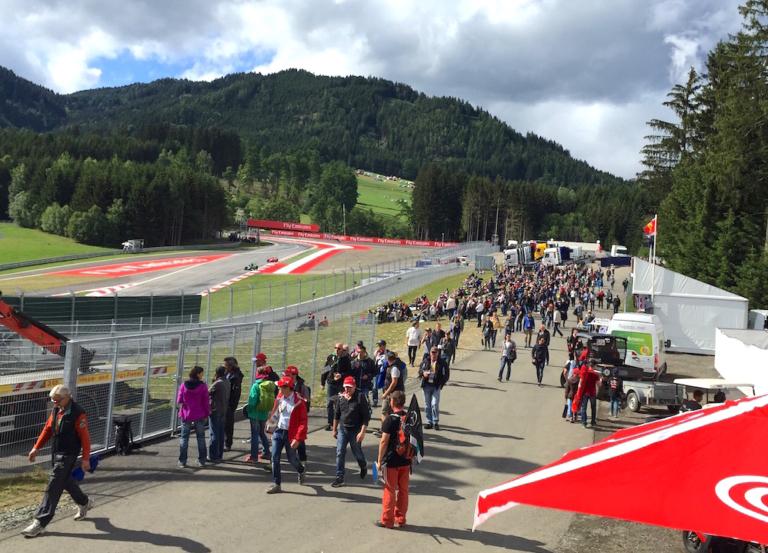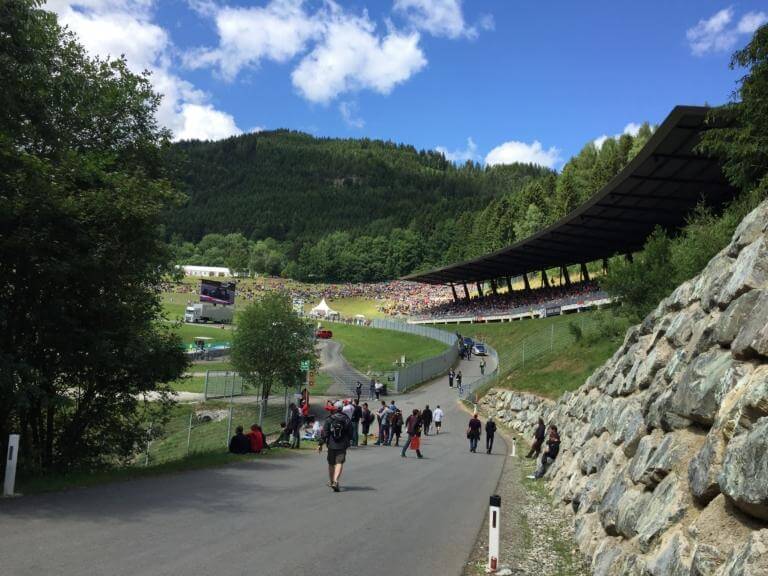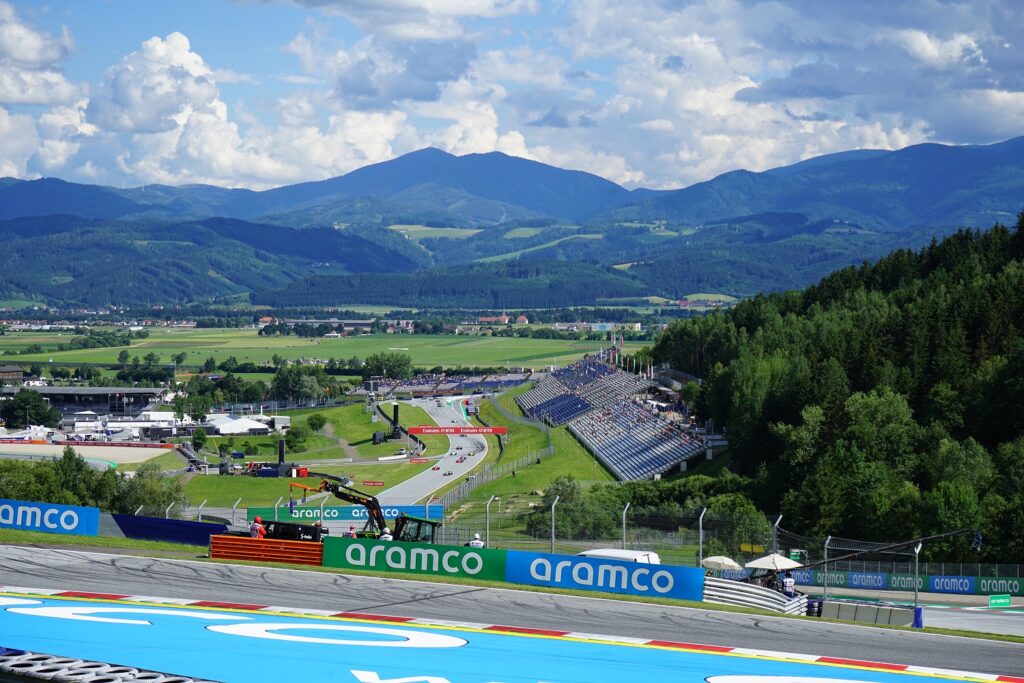
From controversial finishes, to team mate collisions and intense late race battles, we take a look back at some of the most memorable moments from over 50 years of Austrian Grand Prix history!
1975: Brambilla wins in the wet
Vittorio Brambilla won the rain-shortened 1975 Austrian Grand Prix, recording the only victory of his Formula 1 career. Driving for March, the Italian provided somewhat of a wet weather masterclass. Having started eighth on the grid, Brambilla led the field home by 27 seconds when the race was halted on Lap 29.
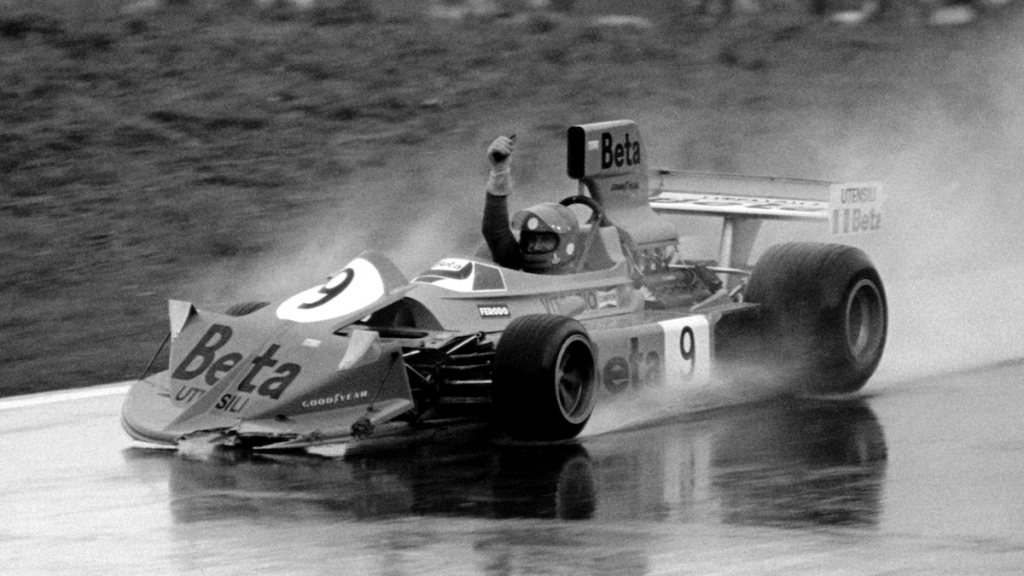
Crossing the line, Brambilla raised his hands from the steering wheel in celebration – and subsequently crashed into the barriers!
Read more: First, Last & Only – Austrian Grand Prix.
1982: Photo finish
The 53 lap 1982 Austrian Grand Prix culminated in a photo finish, as Elio de Angelis and Keke Rosberg were separated by just 0.05 seconds. Throughout the final laps of the race, Rosberg closed in on de Angelis’ Lotus. On the final lap, Rosberg’s Williams was right on the tail of de Angelis, the Finn attempting to pass the Italian in the final corners. Rosberg’s attempts were futile though and de Angelis won the race by less than half a car length.
1984: Lauda’s home win
It took ten attempts, but in 1984, Niki Lauda finally claimed victory on home soil. While McLaren team-mate Alain Prost crashed out at the halfway mark, the Austrian charged ahead of Nelson Piquet on Lap 40. It was not an easy ride for Lauda though, who was suffering with a broken gearbox. Despite not all of his gears working, Lauda crossed the line 23 seconds ahead of Piquet. It remains the only time that an Austrian driver has won their home race.
Read more: Discovering Niki Lauda’s Vienna.
1999: Hakkinen and Coulthard collide
McLaren had a day to forget at the 1999 Austrian Grand Prix. The team locked-out the front row of the grid at the A1 Ring, with Mika Hakkinen on pole and David Coulthard just behind him. An ambitious move into Turn 3 saw Coulthard tap his team-mate, and Hakkinen was sent into a spin. Though Coulthard led the race after their collision, it was Ferrari’s Eddie Irvine who went on to win the race. McLaren still recorded a double podium finish though, with Coulthard second and Hakkinen fighting his way back through the pack from last to third.
2002: Controversy at the finish line
In 2001, Rubens Barrichello allowed Ferrari team-mate Michael Schumacher to pass him on the line. The German took second place in the race, aiding his championship battle. Not much was made of the incident; or at least not as much as was made of a similar incident one year later.
In the 2002 Austrian Grand Prix, Barrichello was once again ahead of Schumacher in the closing stages. The difference was that this time, the Brazilian was leading the race. Barrichello had led most of the race but, on the final lap, Ferrari instructed him to move over and allow Schumacher through.
Barrichello eventually obliged, and Schumacher sailed through with just a few metres of the race remaining. Ferrari’s team orders caused a media furore. The FIA fined the team $1 million, and team orders were subsequently banned from being used.
2014: Massa takes Williams’ most recent pole
There was a popular polesitter at the 2014 Austrian Grand Prix. Unlike the other top runners, Felipe Massa made the fewest mistakes and secured Williams’ first pole position in over two years. Team-mate Valtteri Bottas lined up alongside him on the front row, while Mercedes’ Nico Rosberg was third on the grid.
Lewis Hamilton had an afternoon to forget. He ran wide and had his lap time deleted on his first lap in Q3, then spun at Turn 2 on his final lap. He started only ninth. Massa’s pole position remains the Williams team’s most recent in Formula 1.
2016: Mercedes duel on the last lap
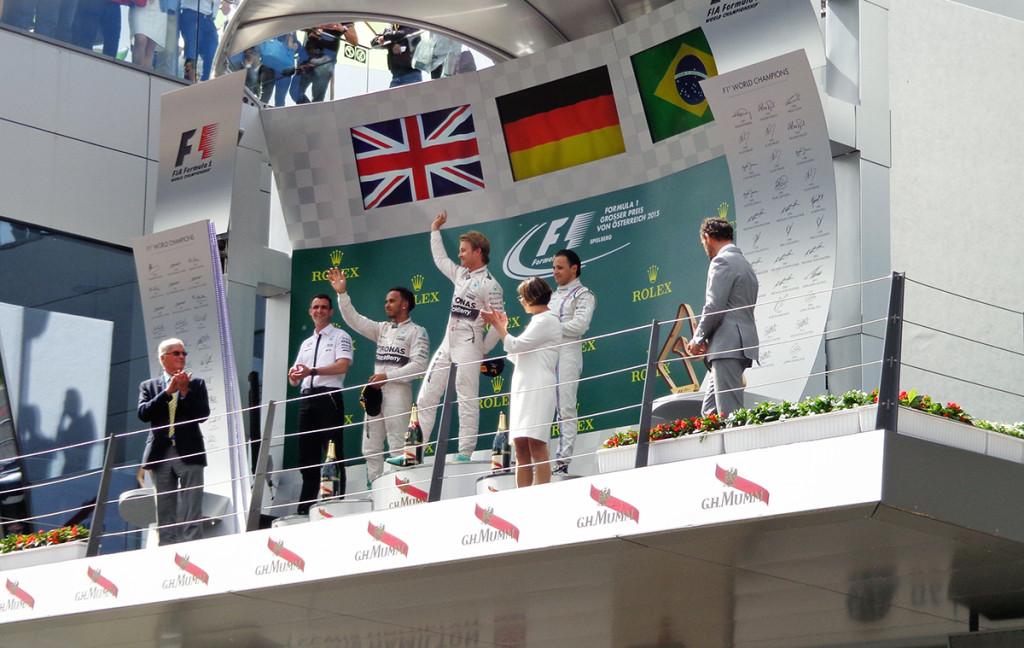
It all came down to the final lap in the 2016 Austrian Grand Prix. Nico Rosberg led the race, with Mercedes team-mate Lewis Hamilton close in pursuit. Hamilton made his move at Turn 2, but the move resulted in contact between the duo. Rosberg suffered damage to his front wing, while Hamilton was able to take the lead.
While the reigning champion took the win, Rosberg nursed his car over the line and came home fourth, after being passed by Max Verstappen and Kimi Raikkonen. The German was also given a ten-second time penalty for causing a collision, which didn’t affect his finishing position.
2019: Leclerc vs Verstappen
Three years on from Hamilton and Rosberg going wheel to wheel at Turn 2 in the closing stages in 2016, history repeated itself in 2019. Charles Leclerc started from the front row, with Max Verstappen alongside him – making it the youngest front row in F1 history.
Verstappen was slow to get away and dropped down the order, and while he made a combeack through the pack, Leclerc was free to lead at the front. With 15 laps remaining, Verstappen was up to second place and six seconds away from the Ferrari at the front. On Lap 68, Verstappen attempted a move on Leclerc at Turn 3, but the Ferrari driver remained ahead. Then, one lap later, in the same spot, Verstappen made a more forceful move and made it stick. Verstappen took the win – much to the delight of the packed grandstands – bringing Honda their first victory in thirteen years.
2020: Norris takes his first podium
The start of a much-delayed Formula 1 season in 2020 began with the Austrian Grand Prix – and the race certainly delivered a memorable afternoon. While Valtteri Bottas took victory, and Charles Leclerc recorded a surprise podium result for Ferrari, all eyes were on the battle for third place in the race’s closing stages.
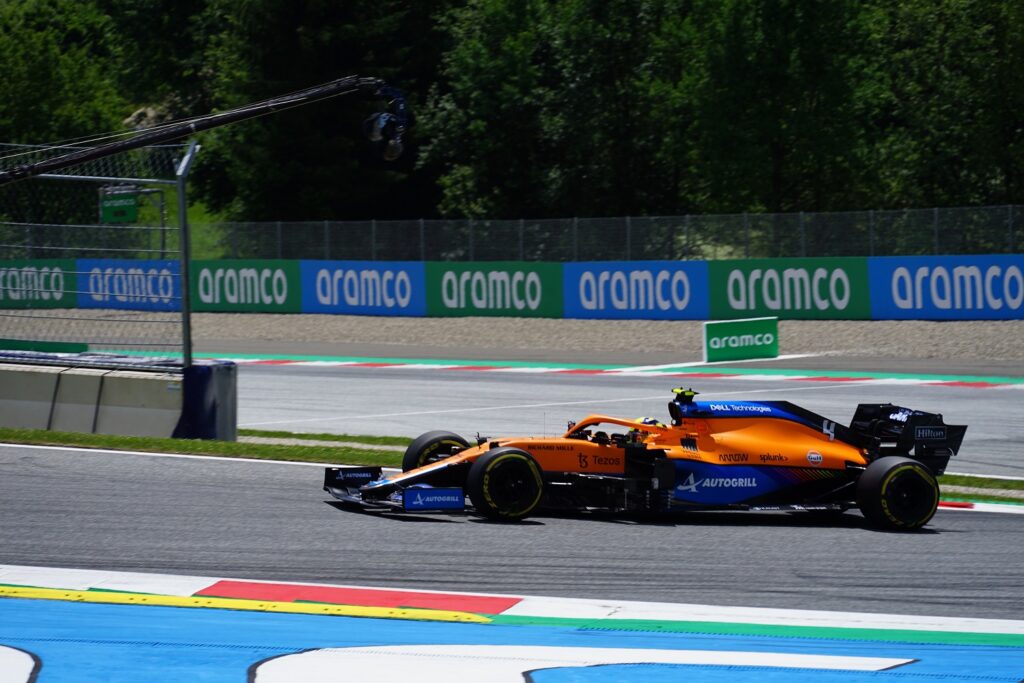
Lewis Hamilton, running in second place, was awarded a five-second time penalty for causing a collision with Red Bull’s Alex Albon. Further back in the pack, Lando Norris overtook Racing Point’s Sergio Perez for fourth place. That left the McLaren driver in clear air to get to within five seconds of Hamilton, and therefore move up onto the final podium position. Setting the fastest lap on the final lap of the race, Norris achieved the feat and became F1’s third-youngest podium finisher.
